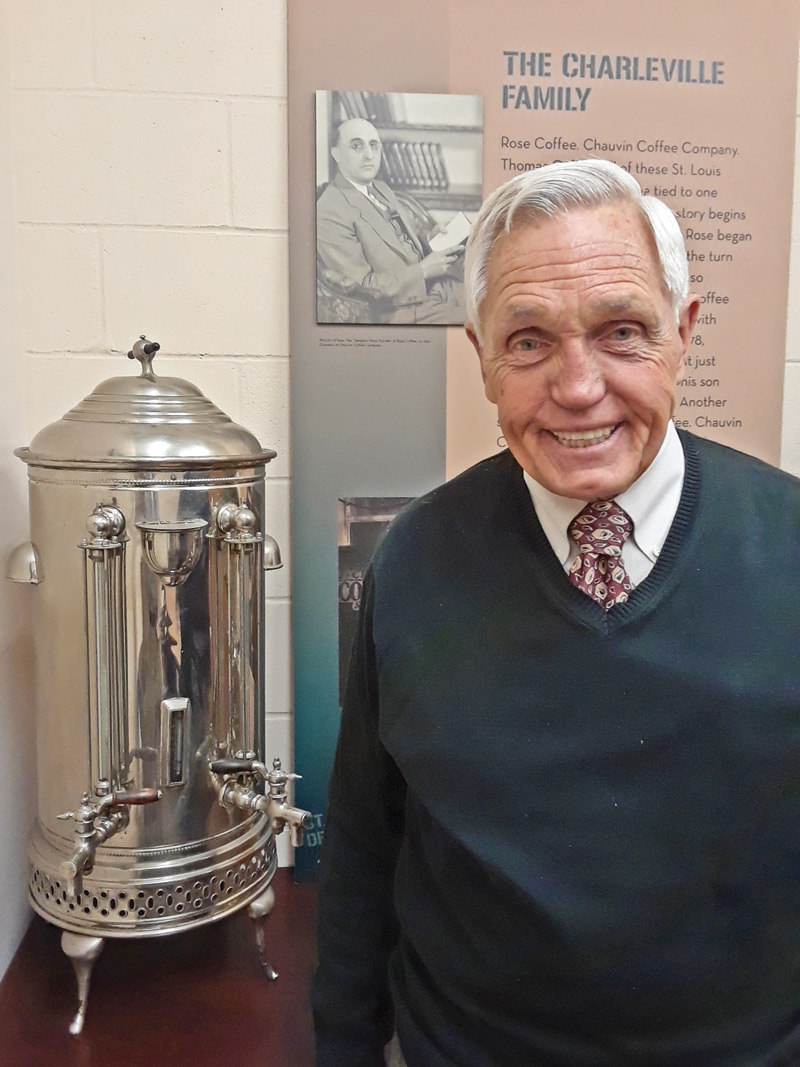clayton
Built in 1935, the Shanley Building at 7800 Maryland Ave. may be doomed. A developer has plans for its demolition. It stands to reason preservationists are intent on saving it; to many, bulldozing it would be an offense to architecture as senseless as razing a Frank Lloyd Wright house in favor of a McMansion. Reportedly, a statement from Fred Kummer’s HBE Corp., developer of a proposed 21-story, 100-unit condo project that would include the Shanley site, says the building is in disrepair. We imagine an engineer would have to make that determination. A reporter, admittedly neither engineer nor architect, thought the building looked just fine, save a crack here and there in the stucco. At any rate, according to the Clayton Historical Society, noted architect Harris Armstrong designed this office building, the first expression of the International Style in these parts. In 1933, a modern Armstrong house displayed at the Century of Progress Exhibition in Chicago caught the attention of Dr. Leo Shanley, a Clayton orthodontist. While he didn’t want this kind of structure for his home, he recognized its functionality and commissioned the architect to design his office building. Armstrong, inspired by the likes of noted architects Richard Neutra and Le Corbusier, designed a building specifically for the orthodontist, down to the furniture, lamps, hardware and light fixtures. The Shanley Building won Armstrong a silver medal at the Paris Exposition of 1937, and it still is admired by architects who note that it strives to achieve a purity of forms—unblemished geometric shapes that overlap and intertwine. The two-story rear face consists almost entirely of windows; glass block was employed liberally on the stuccoed concrete exterior. Listed since the 1980s on the National Register of Historic Places, it also is one of the earliest Modernist buildings in the metro. The building today houses offices including the Clayton License Bureau. Meanwhile, plans for the approximately $175 million redevelopment continue apace: HBE’s project was scheduled to be considered Monday (May 20) by Clayton’s planning commission and architectural review body. Architectural review. Huh. How much attention could have been given to the consideration that Armstrong was, arguably, the StL’s greatest Modernist architect? Many of his buildings—some remarkable, others breathtaking—dot our landscape.
the metro
Has the time come to rename our fair county? If so, I have a recommendation: Cook County, in honor of the notorious entity that envelops Chicago. ‘Saint’ doesn’t fit of late, considering the nefarious actions of certain government officials. As the saying goes: When you lie down with dogs, you’ll get hair all over you. According to the feds, it’s getting pretty hairy in these here parts. First up: Steve Stenger, former county executive and once- and never-to-be ‘metro mayor,’ pleaded guilty to official malfeasance. But his wasn’t a one-man barber shop, so to speak. It was a full-service salon. Stenger’s acquaintances, donors and former colleagues should check for unwanted hairs, regardless of how they have pleaded, or will. Sheila Sweeney used to be director of the St. Louis Economic Partnership. She resigned in January rather than be fired, and just pleaded guilty to a felony for failing to alert authorities to Stenger’s criminal activities. Speaking of hair—insurance exec, etc., John G. Rallo looks impeccably coiffed. Appearances, however, may be deceiving. In Stenger’s ‘pay-to-play’ scheme, his campaign allegedly benefited handsomely from Rallo’s largesse. In the wake of Stenger’s corruption case, Rallo has pleaded not guilty to three federal charges. Prosecutors have accused Rallo of squeezing business out of Stenger in exchange for campaign donations: ‘Consulting’ contracts, sweet land deals, you name it. Prosecutors say there’s plenty of evidence, to wit, like recordings that feature threats laced with enough obscenities to make a gangster blush. But wherever he is—probably only purgatory at this point—big-city boss Richard J. Daley is laughing like hell.
creve coeur
Since the Monsanto merger, Bayer execs may have felt like taking much more aspirin than the company’s labels recommend. We’re not sure whether the storied analgesic is indicated for a real pain in the neck—to say it nicely for our family readership—because that’s what Monsanto has become for Bayer. Fortune reports that the German company has lost nearly half of its value— close to 46 percent—since it acquired the Creve Coeurbased agrichemical giant last June. Although the EPA claims otherwise, the World Health Organization asserts that glyphosate, the active ingredient in Monsanto’s Roundup weed killer, is carcinogenic. A jury in California this month awarded a couple suffering from non-Hodgkin lymphoma $2 billion in punitive damages and $55 million in compensatory damages. And the hits keep on coming. An investigation by a French newspaper just outed Bayer for collaborating with international PR firm FleishmanHillard (founded and based in St. Louis) to compile a list of journalists, scientists and politicians’ stances on Monsanto in order to launch a media counter-offensive. Bayer fired FH and apologized for the list. So, what’s next for the troubled company—Excedrin Migraine?
 st. louis
st. louis
Used to be you’d have to go far and wide to find a Dunkin’ Donuts in The Lou and environs. Nowadays, it’s just called Dunkin’ … corporate hooey designed to sound like you’re not about to ingest one. Million. Calories. News flash: Dunkin’ will be opening seven new locations in the metro in the next few years. Sweet! I mean, I like doughnuts as much as any police officer, but what I’ve found particularly enjoyable of late from the land of Dunkin’—calories be dagnabbed—is its bottled, iced coffee. It’s still labeled Dunkin’ Donuts (somebody didn’t get the memo) and can be found in most any store with a cooler. Like the gas station, a paradise for needless refreshment. It has (gulp) 290 calories per bottle. Well, the dietitian in me didn’t really get jumpy until discovering that my new favorite beverage is ‘produced by the Coca-Cola Co.’ The needle on my high fructose corn syrup sensor swung into the red. But the sweetener—and man, this stuff sure is sweet—is plain old sugar. Whew, what a relief. I guess.
notable neighbors: kirkwood
Nothing is quite as heavenly as the aroma of freshly ground coffee. But how good does it taste once brewed? Some folks don’t much care because to them, the beverage is only a means for caffeine delivery, merely ‘meh’ seven mornings a week. That’s egregious to Tom Charleville, who roasts the beans for Clipper Coffee at a plant off Fillmore Avenue on the east side of Kirkwood. Java juice runs through Charleville’s veins— he’s the force behind Clipper, a newish local brand with the same DNA … well, exclusive blend … as Thomas Coffee, his namesake blend once preferred by restaurants and country clubs throughout the metro. Those beans were sourced from Costa Rica, Guatemala and Colombia. Charleville suffered a massive stroke in 2007 and sold the company to a group of Chicago investors while still incapacitated. He says his prognosis was chilling: Doctors told him he would never be able to reason or talk again; the nursing home loomed. “For six years, Tom couldn’t talk,” says Charleville, who often refers to himself in the third person. He’s made it a long way back, but still suffers from aphasia (difficulty speaking). In any event, Clipper Coffee is the ‘grandchild’ of Rose Coffee, founded in 1930. Clipper is the next chapter of the Thomas story, which began with an epiphany at 2 a.m. one morning in 1984 while Charleville was making a batch of doughnuts at Donut Drive-In at Chippewa and Watson, which he owned at the time: “My roots are in coffee!” His first customer was Garavelli’s Cafeteria right across the street. At the outset, he sold only to food service clients: Schneithorst’s, Charcoal House, Uncle Bill’s, the late, lamented Parkmoor restaurants, and all but two metro country clubs. But as coffee connoisseurs kept showing up at his plant in midtown, Thomas Coffee eventually made its way from being poured into cups at Schnucks Station restaurants to metro supermarket shelves as well. Clipper has been in business just four years, and cans can be found locally at Dierbergs, Lucky’s and Fresh Thyme markets, plus Hy-Vee locations in Osage Beach, Columbia and Jeff City. (Vacuum-sealed metal cans keep coffee fresh for at least four years, Charleville says. Valve bags? Six months or so, but they’re one-third the cost.) Now, what about everybody who buys Folgers in plastic tubs—or snobs who will drink nothing but Starbucks? Well, asserts Charleville, even if you grind and brew Folgers beans, you still get Folgers coffee. Meh. Starbucks isn’t all that, either, he emphasizes. “It’s commercial grade,” he says. Visit clippercoffeeco.com.









